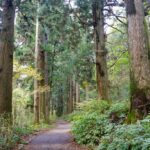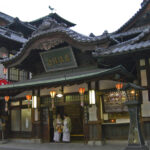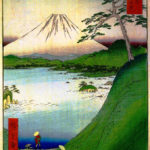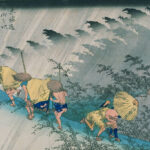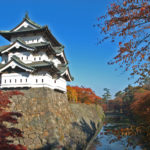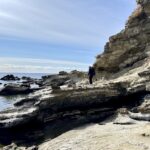The Hakone-Tozan Line serving villages in the hot spring resort of Hakone in Kanagawa Prefecture takes passengers deep into the mountains and back in time.
In the secluded days of the Tokugawa shogunate (1603–1867), Hakone was the last checkpoint and resting place on the Tokaido road connecting the Imperial capital of Kyoto in the West with the shogunate’s de facto capital of Edo (now Tokyo) in the East. After Japan opened its ports to international trade in the 1850s and modernization began, Hakone’s identity soon changed from checkpoint to tourist destination.

A 100-series train pulls away from Miyanoshita Station on the ascent to Gora. The 100-series trains have been in service since 1950 and lend a sense of nostalgia and comfortable well-being to journeys along the Hakone-Tozan Line.
THE JAPAN JOURNAL
Much of the Tokaido fell into disuse with the development of the railways beginning in the 1870s, but a stretch of the old road remains in Hakone, a cedar-lined stone pathway close to Lake Ashi that makes for an atmospheric short hike. The Hakone Checkpoint can also be visited here. The buildings are replicas of the original structures but nevertheless evocative of feudal times.
Access to the mountain villages and many hot springs in the area improved with the development of the Hakone-Tozan mountain railway, which began with the opening of a horse-drawn railway in 1888 and culminated with the completion of the scenic Hakone-Yumoto to Gora adhesion railway in 1919. Modeled on the single-track Bernina railway in Switzerland, the Hakone-Tozan Line employs tunnels, three switchbacks and plenty of sharp curves to negotiate a gradient of 8% in places, one of the steepest climbs or descents for a conventional railway line anywhere in the world.
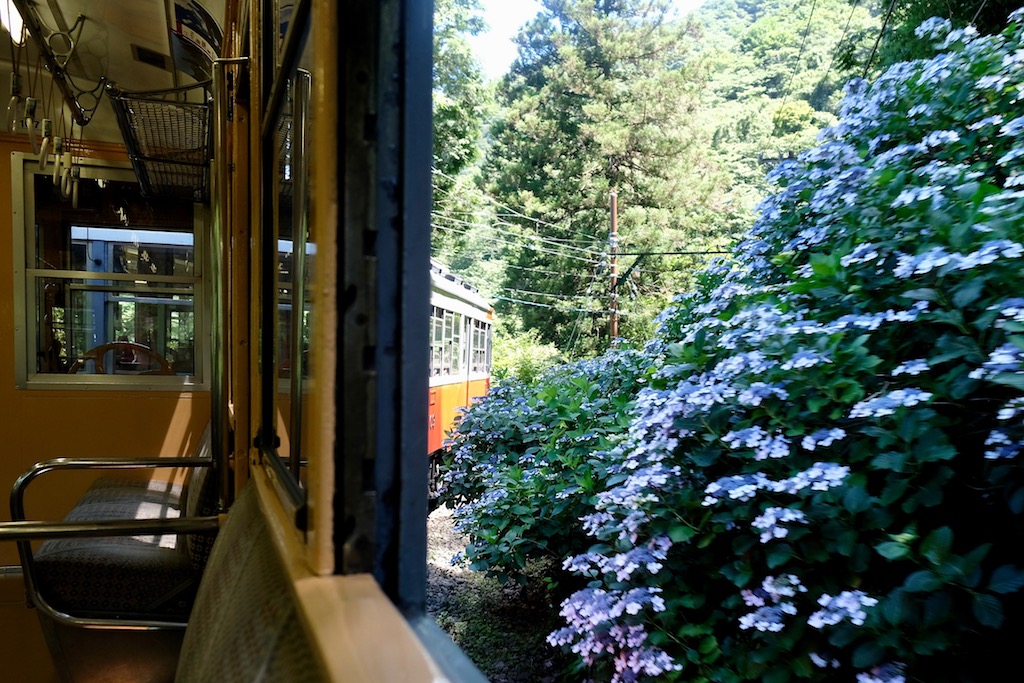
Lacecap hydrangeas viewed from an open window on one of many sharp curves on the Hakone-Tozan Line
THE JAPAN JOURNAL
The two- or three-carriage trains — some dating from 1950 — zig-zag up and down the steep slope at 15-minute intervals. In the summer, passengers throw open the windows and take in the air as the train heads into the mountains through long cool tunnels, brushing against the hydrangea bushes that color the length of the route.
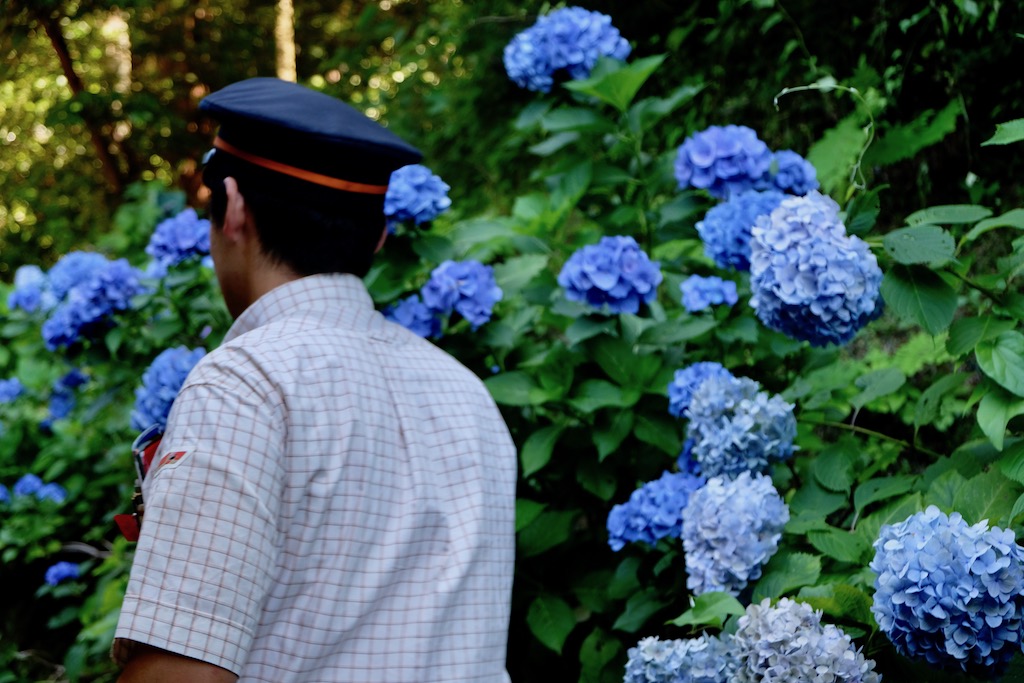
At a switchback, a driver walks from one end of the short train to the other
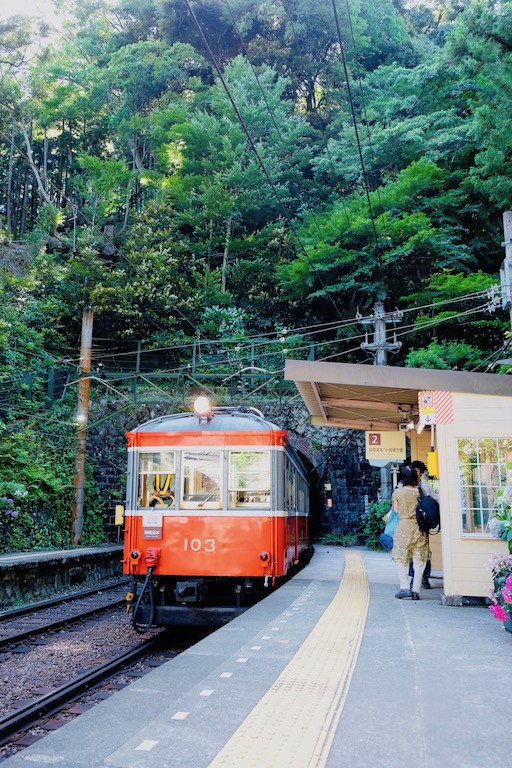
A 100-series train emerges from one of many tunnels through the mountains on the Hakone-Tozan Line
THE JAPAN JOURNAL
The Hakone destination of choice in the early days of foreign tourism was Miyanoshita, where a magnificent teahouse called Naraya and, later, the grand European-style hotel Fujiya provided the accommodation. Both establishments are still in business.
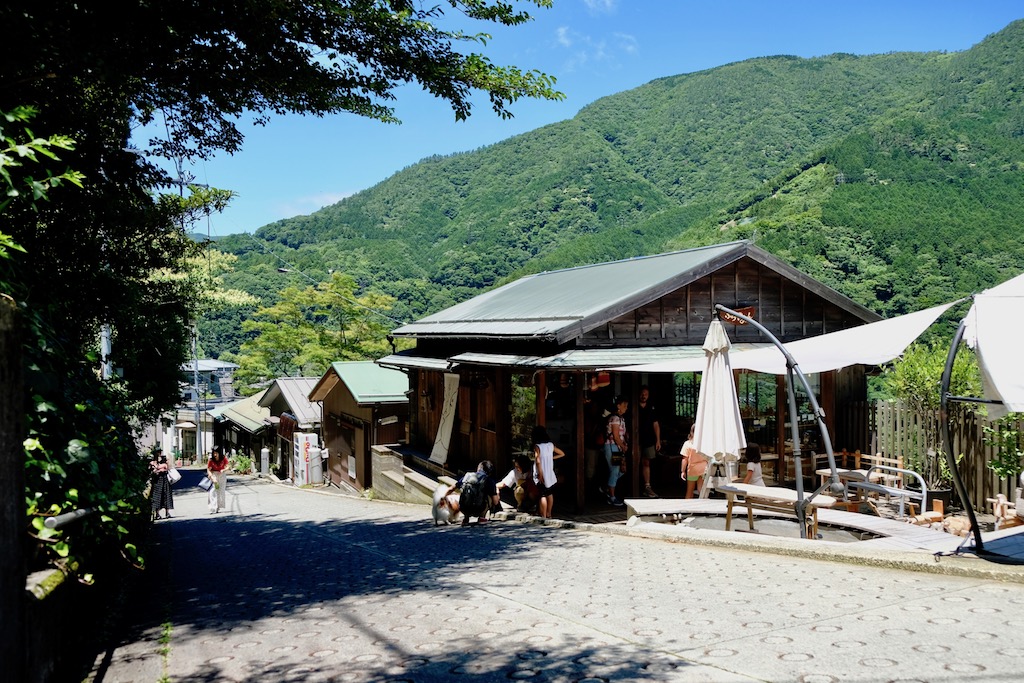
Once a large and splendid tea house and the first inn in Miyanoshita, Naraya exists today on a more modest scale.
THE JAPAN JOURNAL
Japanologist Basil Hall Chamberlain, author of the 1899 A Handbook for Travelers in Japan, lived for twenty years in the Fujiya Hotel, so enchanted was he with the lofty locale. Fujiya was preferred to Naraya by the first foreign visitors not least because, as Chamberlain observed in Things Japanese, “stoveless Japanese tea-houses are woefully chilly places.”
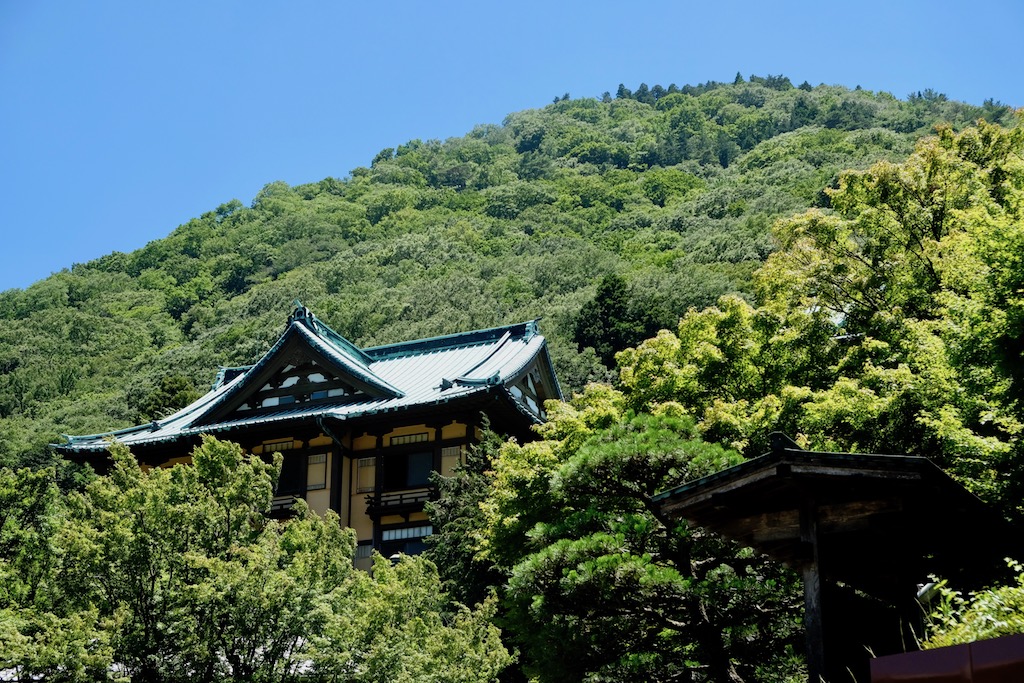
Fujiya Hotel, founded in 1878, is one of the oldest hotels in Japan.
THE JAPAN JOURNAL
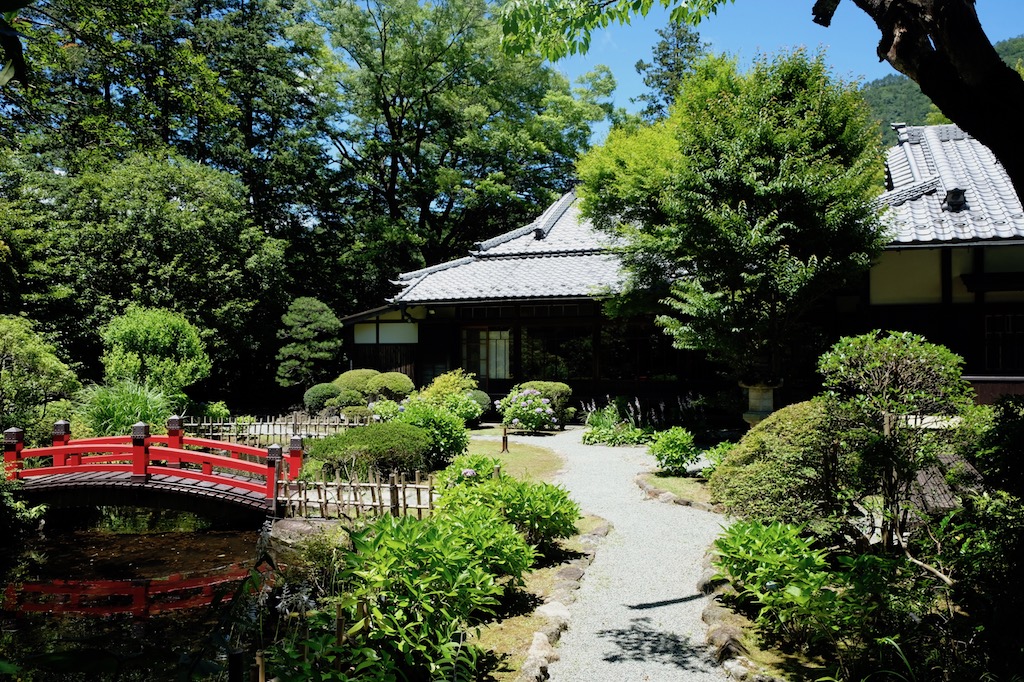
Fujiya Hotel’s Kikka-so Inn annex
THE JAPAN JOURNAL
Miyanoshita has retained much of its charm, attracting shoppers in search of antiques and hikers in search of waterfalls. Nevertheless, most visitors to the Hakone area these days head for the concentration of hot spring inns at the start of the Hakone-Tozan Line, Hakone-Yumoto, or press on via the Hakone Cable Car and ropeway to the volcanic Owakudani valley and pristine Lake Ashi beyond.
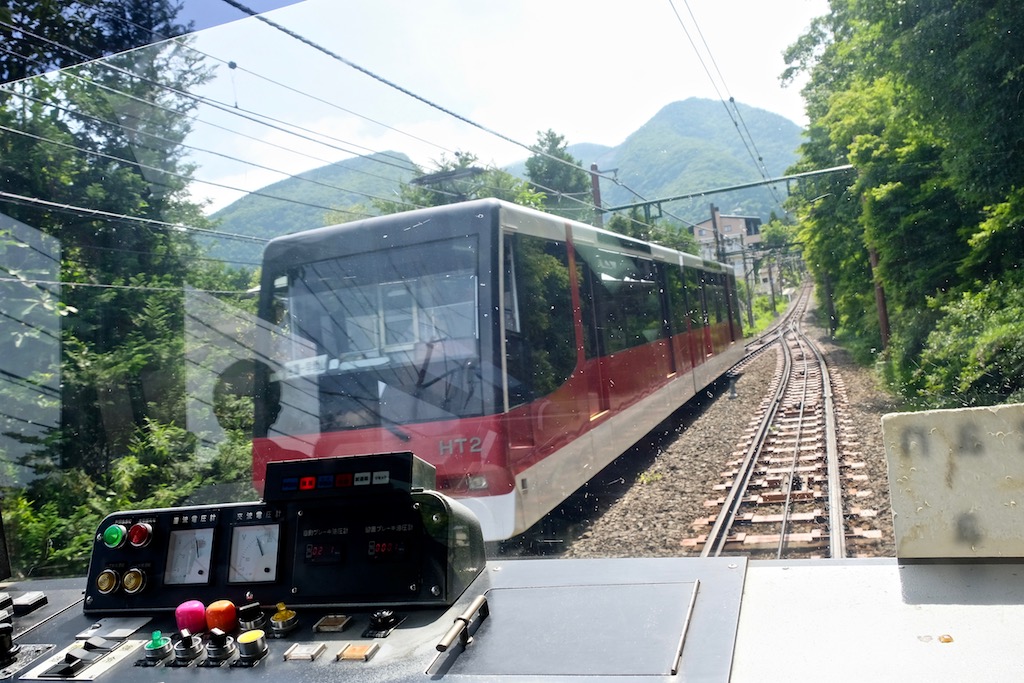
It’s a straight, steep line to the top on the Hakone-Tozan Cable Car line from Gora Station to Sounzan Station.
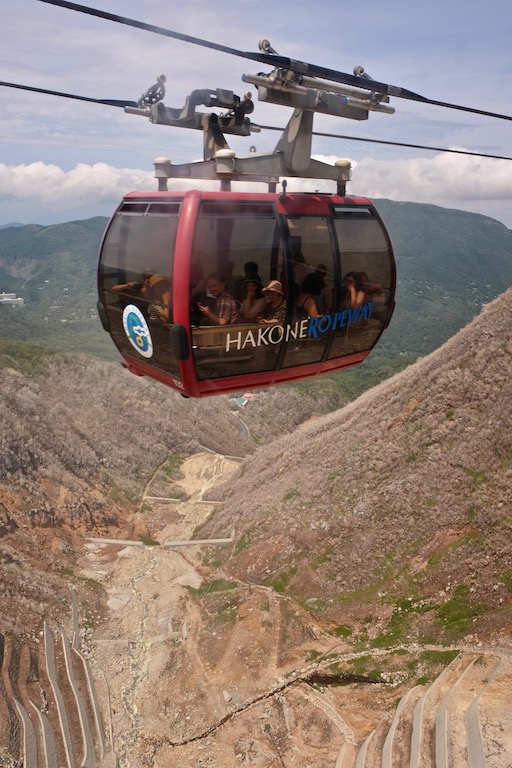
The final stretch of the railway journey from Hakone-Yumoto to the shore of Lake Ashi is completed on the Hakone Ropeway, which extends from Sounzan Station to Togendai Station. The thirty-minute ride affords spectacular aerial views of the sulphur vents of Owakudani valley, Lake Ashi and, on a clear day, Mount Fuji. Visitors can disembark at Owakudani to see the sulfuric hot spring sources close up or follow the hiking trail to Mount Kamiyama and Lake Ashi beyond.
Others still will jump off at stations along the line to enjoy one of the many excellent museums in this neck of the woods, The sculpture park “Hakone Open Air Museum” is one not to miss.
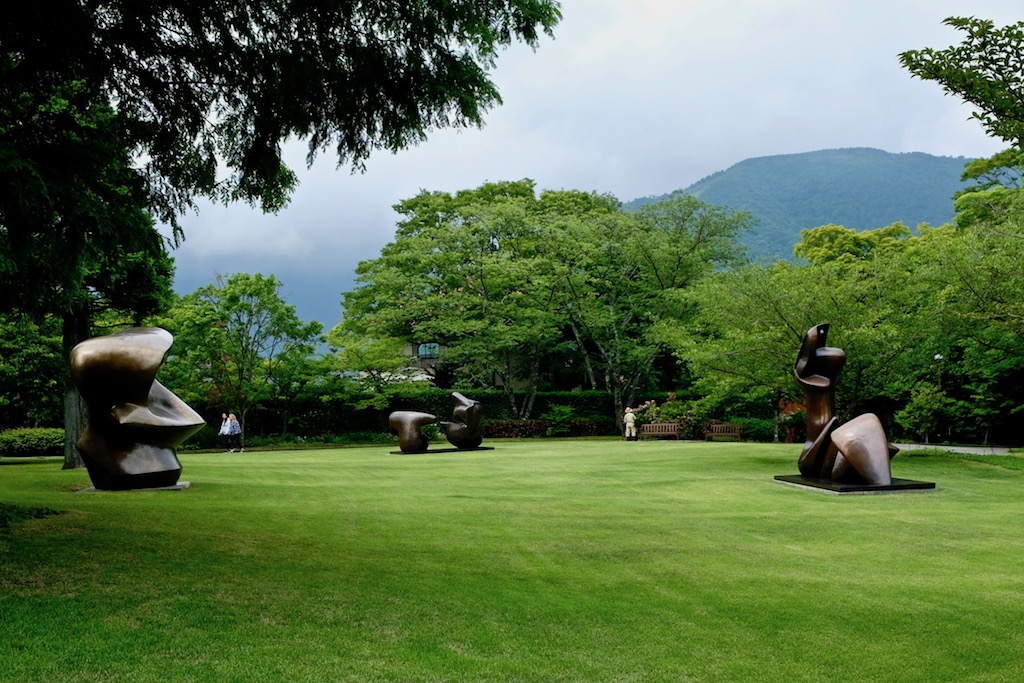
There are many exceptional art museums in the Hakone area, none more spectacular than the Hakone Open Air Museum, a sculpture park just a short walk from Chokoku-no-Mori Station. Henry Moore is among the famous sculptors represented here.
But every which way you turn in Hakone, there are sights to behold that have not changed much in 150 years of tourism. All you have to do to see for yourself is get on the train.
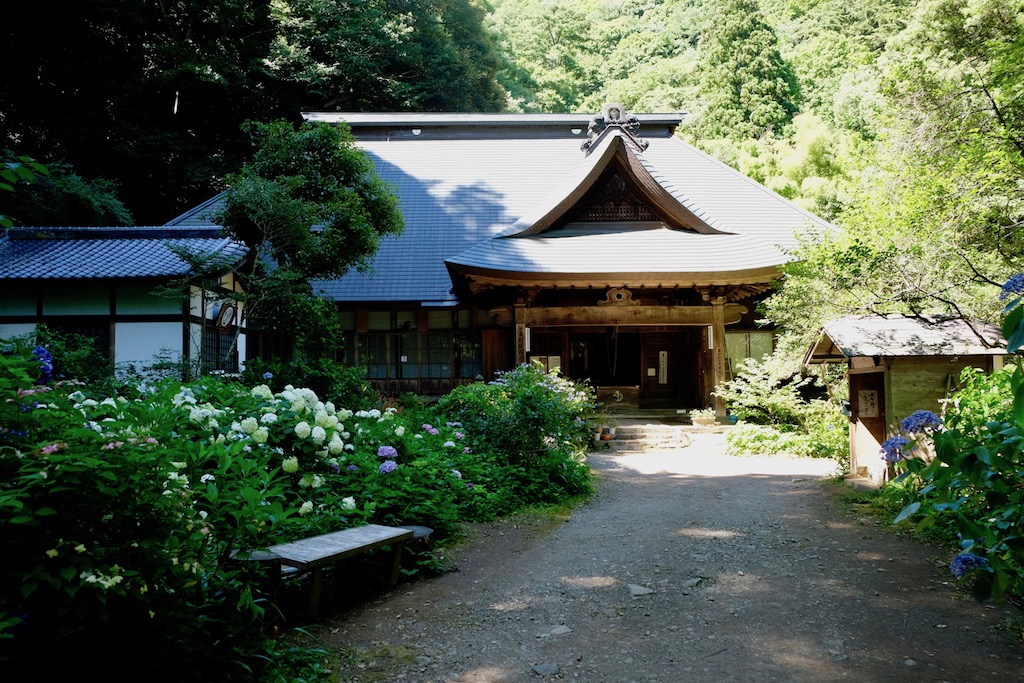
Tonosawa Station on the Hakone-Tozan Line is located in the middle of a ravine forest. A 20-minute hike up steep steps from the station leads to Amida-ji, a rustic old temple with gardens heavily planted with hydrangeas. A number of famous hot-spring inns are located downhill from the station at the foot of the ravine, including Tonosawa Ichinoyu Honkan, founded in 1630, and Kansuiro Ryokan, a favorite of the first prime minister of Japan, Hirobumi Ito.
Alex Hendy, The Japan Journal
Note: Story first posted to TJJ ONLINE on 5 June 2019. Updated May 30, 2022 and June 19, 2025.

